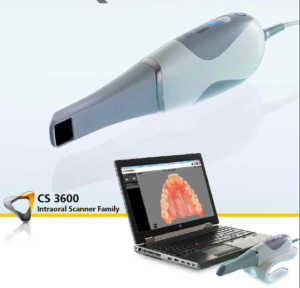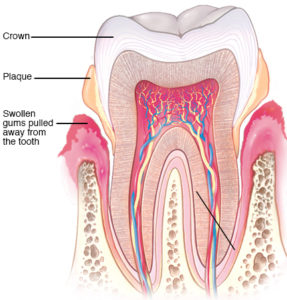Header logo
header top contact widget
Blog Archives
Recent Posts
Categories
Archives
- September 2024
- August 2024
- July 2024
- June 2024
- May 2024
- April 2024
- March 2024
- February 2024
- January 2024
- December 2023
- November 2023
- October 2023
- September 2023
- August 2023
- July 2023
- June 2023
- May 2023
- April 2023
- March 2023
- February 2023
- January 2023
- December 2022
- November 2022
- October 2022
- September 2022
- August 2022
- July 2022
- June 2022
- May 2022
- April 2022
- March 2022
- February 2022
- January 2022
- December 2021
- November 2021
- October 2021
- September 2021
- August 2021
- July 2021
- June 2021
- May 2021
- April 2021
- March 2021
- February 2021
- January 2021
- December 2020
- November 2020
- October 2020
- September 2020
- August 2020
- July 2020
- June 2020
- May 2020
- April 2020
- March 2020
- February 2020
- January 2020
- December 2019
- November 2019
- October 2019
- September 2019
- August 2019
- July 2019
- June 2019
- May 2019
- April 2019
- March 2019
- February 2019
- January 2019
- December 2018
- November 2018
- October 2018
- September 2018
- August 2018
- July 2018
- June 2018
- May 2018
- April 2018
- March 2018
- February 2018
- January 2018
- December 2017
- November 2017
- October 2017
- September 2017
- August 2017
- July 2017
- June 2017
- May 2017
- April 2017
- March 2017
- February 2017
- January 2017
- December 2016
- November 2016
- October 2016
- September 2016
- August 2016
- July 2016
- June 2016
- May 2016
- April 2016
- March 2016
- February 2016
- January 2016
- December 2015
- November 2015
- October 2015
- September 2015
- August 2015
- July 2015
- June 2015
- May 2015
- April 2015
- March 2015
- February 2015
- January 2015
- December 2014
- November 2014
- October 2014
- September 2014
- August 2014
- July 2014
- June 2014
- May 2014
- April 2014
- March 2014
- February 2014
- January 2014
- December 2013
- November 2013
- October 2013
- September 2013
- August 2013
- July 2013
- June 2013
- May 2013
- April 2013
- March 2013
- February 2013
- January 2013
- December 2012
- November 2012
- October 2012
- September 2012
- August 2012
- July 2012
- June 2012
Dental Implants Give You The MOST For Your Investment When It Comes To Replacing Teeth.
Posted on Nov 28, 2018 by William J. Claiborne, DDS MS
As a Periodontist, I have advanced training and skills to treat all levels of periodontal (gum) disease as well as in the reshaping of gum tissues in the mouth. Another realm of the periodontal specialty, however, is in the diagnosis and placement of dental implants.
In addition to the intense academic and hands-on training, I have completed continuing education on an ongoing basis to stay current on the latest advancements in the causes and treatment of all stages of gum disease as well as in new options in implant dentistry.
Although my specialty has provided an interesting and ever-evolving profession, I have developed a special closeness to dental implants. This is mainly because I am witness to the transformations they can make in people who choose to replace a denture, partial or bridge with this advanced, superior form of tooth replacement.
Dental implants are ideal replacements for missing teeth for a number of reasons. Through intricately-designed implant systems, modern techniques in placement and restoration, and advanced materials, adults now have a wide variety of options for replacing natural teeth.
Along with the developments in implant dentistry, my advanced training in the diagnosis and placement of dental implants gives me expanded skills to provide optimal results. While our patients mainly see the results of an appealing, confident smile once their treatment is completed, dental implant recipients receive a long list of benefits from this investment (including their ability to last a lifetime!).
One of the first things our dental implant patients notice is their ability to bite and chew again, without movement. Because dental implants are held by the jaw bone, just as natural tooth roots, the attached teeth have the same, dependable foundation as the natural teeth you once had.
People who eat with dental implants no longer worry about embarrassing or uncomfortable slips while chewing. They can dine with friends and eat the foods they love without the fear of slips or clicks. Dental implants also prevent foods from becoming trapped between the denture and tender gum tissues while eating. No longer do seeds or bits of nuts “stab” into the gums!
A benefit often overlooked by implant recipients, however, is their ability to halt bone loss. With natural teeth held by the upper or lower jaws, the bones are nurtured by the presence of tooth roots that provide stimulation and nourishment. Without their presence, the jaw bones begin to shrink, or “resorb.” Resorption is when these bones begin to lose mass, declining in height and width.
Bone loss leads to a number of problems. For one, resorption is why once-snug dentures and partials begin to slip and cause uncomfortable rubbing.
A new denture is designed to conform to the unique contours of your gum ridge (the gum-covered arch that once held your natural tooth roots). As the jaw bone declines in mass, the foundation it was designed to fit flattens. This results in a less secure fit that can allow for movement when chewing. Although denture pastes or adhesives may provide temporary improvement, eventually even relines (reshaping the interior contours) are of little help.
Once resorption begins, remaining teeth adjacent to the area of bone loss are affected. A shrinking bone that abuts areas of resorption weakens tooth root stability. This creates a domino effect. When a natural tooth is lost, statistics show the next to go will most likely be an adjacent tooth.
As bone loss continues, the ever-shrinking jaw provides a weaker foundation for remaining teeth. It can also result in a facial appearance that is far beyond one’s actual years. Bone resorption can be visually detected in people who have jowls, a collapsed mouth (know as a ‘granny look’) and a sharply pointed chin.
In cases where one or several teeth together are missing, crown-&-bridge combinations are an option. However, crowns and bridges can require repairs and/or replacements over time. And, they do nothing to halt bone loss. Another consideration is the need to crown otherwise healthy, natural teeth for the sole purpose of supporting a bridge. This compromises the integrity of a natural tooth for the sole purpose of supporting one side of a bridge.
To many people who choose dental implants to replace teeth, however, it is the appeal of making a lifelong investment that is the determining factor when comparing costs of implants to other tooth replacement options. Since they are designed to last a lifetime, many like dental implants for their ‘one and done’ choice of treatment.
For every patient, our goal is to provide the best outcome based on your long term goals. For a private consultation, call 828-274-9440 for an appointment or tap here to begin.
Revolutionizing The Process Of Taking Impressions – New Technology Enhances Outcomes, Comfort!
Posted on Nov 16, 2018 by William J. Claiborne, DDS MS
The Asheville periodontal dental office of Biltmore Periodontics is pleased to announce the latest technology – the CS 3600 intraoral scanner.
No longer do our patients have impressions made with bulky, goop-filled trays held in their mouths!
The CS 3600 Scanner is designed to quickly and comfortably scan areas inside our patient’s mouth. It acquires digital impressions accurately and easily, scanning a full or dual arch for the fabrication of digital models or appliances. (https://www.biltmoreperiodontics.com/services/advanced-technology/)
The CS 3600 provides a highly accurate digital impression using a small, handheld scanner. It can also reach difficult–to–access areas in the patient’s mouth for superior results with improved patient comfort.
Just some of the superior features of the CS 3600 Scanner include:
• Acquires digital impressions to design crowns, inlays, onlays, bridges, orthodontic appliances and aligners, custom abutments and RPD;
• Has an Intelligent Matching System that prevents missing data in any area. Plus, it even sends a warning to indicate areas of the scan that lack detail;
• Has adaptive hole filling that automatically identifies holes and selects the appropriate anatomical color for optimal aesthetic outcomes;
• Enhances outcomes for restorations, orthodontics and implants; and,
• Displays precise, accurate HD 3D color images with vivid color and details for improved case review, analysis and communication between doctors, referrals and labs.
This highly-advanced technology joins the cutting edge features also available at Biltmore Periodontics. These include:
Dental Radiology With 3-D Cone Beam Technology
Dr. Claiborne and Dr. Boyland rely on 3D imaging in diagnostic and treatment planning. This latest level of 3D imaging covers the whole dentition area, giving a clear view of the mandible and maxilla (upper and lower jaw) for intricate review for the diagnostic requirements of endodontics, periodontics, orthodontics, implantology, TMJ and prosthodontics as well as dental and maxillofacial surgery.
In addition to imaging, cone beam radiographs provide images in sagittal, axial, and coronal planes. This makes it possible to locate and trace the mandibular nerve canal for pre-surgical planning for an ideal implant position. Our doctors also like that patients are exposed to only minute levels of radiation through a process that is fast and comfortable.
CareStream Cone Beam Computer Tomography Imaging
Our office features the Carestream 9300. This Cone Beam Computer Tomography provides dual modality panoramic and 3D imaging with exceptional detail and range. The CS 9300 can deliver 3D imaging at a significantly lower dose than 2D panoramic imaging. In fact, in a recent study, the CS 9300 and CS 9300 had up to an 85 percent lower radiation dose than traditional panoramic imaging.
Simplant Dental Software for Computerized Dental Implant Placement
This advanced software system allows for pre-surgical positioning of dental implants on the computer using a 3D model of the patient’s jaw. Once the implant type is selected, a surgical template is developed that ensures a precision fit. Simplant creates optimal implant treatment success, even for complex cases. It also simplifies the team treatment process so intricate aspects of the surgical process can be discussed prior to placement.
Intraoral Camera Technology
This self-contained intraoral camera features full motion video with outstanding image quality from an internal camera that captures ideal angles and images with the click of a button. The images are sent to screen for a clear, crisp view so your Periodontists can confer with patients on specific treatment issues.
Computer Imaging In Treatment Suites
Treatment suites are equipped with computers for convenient image sharing with patients. This allows patients to have a more complete understanding of their individual needs through images that can be pulled up by Dr. Claiborne, with the ability to enlarge certain areas to show specific details. Through this, patients have greater involvement in treatment decisions.
You can learn more about this technology at: https://www.biltmoreperiodontics.com/services/advanced-technology/
If You Smoke, Your Smile Takes The First Hit.
Posted on Nov 06, 2018 by William J. Claiborne, DDS MS
First, let me assure you that this article is NOT a lecture about the health hazards associated with smoking cigarettes. We assume you’ve heard many of those statistics and warnings before.

Signs of gum disease
However, as a Periodontist, I would be remiss if I didn’t begin by sharing the rather unique view I have of what it does to the inside of an adult mouth. With this in mind, I’ll share some perspectives you may not know.
When it comes to a smile, be aware that smokers have a greater risk of periodontal (gum) disease, more frequent bad breath, higher plaque levels, stained teeth, and slower healing following extractions, gum treatment and oral surgery.
The primary reason for this is because smoking has a drying effect on oral tissues. Without moisture that moves bacteria out of the mouth, this creates an ideal breeding environment for oral bacteria.
As oral bacteria reproduce and multiply in the mouth, the bacteria become infectious and inflame gum tissues. This is the beginning of gum disease. In the initial stage, known as gingivitis, symptoms include frequent bad breath, tender gums, and gum tissues that bleed easily when brushing.
As it progresses, bad breath becomes persistent, gum tissues turn red, and pus pockets form at the base of some teeth. Eventually, this potent bacteria attack bone structures that support teeth and tissues surrounding tooth roots. This causes teeth to loosen and can lead to the need for tooth removal.
Gum disease is the nation’s leading cause of adult tooth loss. You may be surprised to learn that losing teeth is highly detrimental to your overall health. Studies show that people who wear dentures die ten years earlier than those with natural teeth, on average. Denture wearers take more medications, have more gastrointestinal problems, and are less socially active.
Smoking is also attributed to nearly a third of all cancer diseases and deaths. Pregnant women who smoke have a greater risk for first-trimester spontaneous abortion, preterm births, low birth weight babies (under 5.5 lbs) and sudden infant death syndrome (SIDS). Women who smoke are risk having early menopause while men who smoke are at higher risk of impotency.
On average, smokers decrease life expectancy by 10–15 years. That’s pretty scary. As hard as it is, kicking the habit is well worth the benefits, which can be obvious almost immediately. These often include:
• Immediately: You halt the contribution of ‘second-hand smoke,’ which puts at least 50 carcinogens and other harmful chemicals in the air. If you have children, you’ll eliminate them waking up with ‘smoker’s cough.’
• Within 2 days: The sense of smell and taste return and damaged nerve endings begin to regenerate.
• Within 3 days: Breathing becomes easier with fuller air intake as the lungs start to repair.
• Within 2 weeks: Blood circulation in the gums is restored. The risk of heart attack declines.
• Within 6 weeks: Overall circulation has improved, walking has become easier and your chronic cough has cleared.
In our periodontal dental office, we don’t lecture our patients. We respect them and work with each on an individual basis. Our goal is to help you keep your smile in good shape, keep your natural teeth, and avoid the hazards of periodontal disease.
For those who have lost natural teeth, a periodontist has advanced training in the diagnosis and placement of dental implants in addition to the treatment of all stages of gum disease.
If you are experiencing signs associated with periodontal disease, the condition will only worsen without treatment. The earlier you treat gum disease, the less-involved treatment will be. Call 828-274-9440 to schedule an initial appointment. It is not necessary to be referred.


